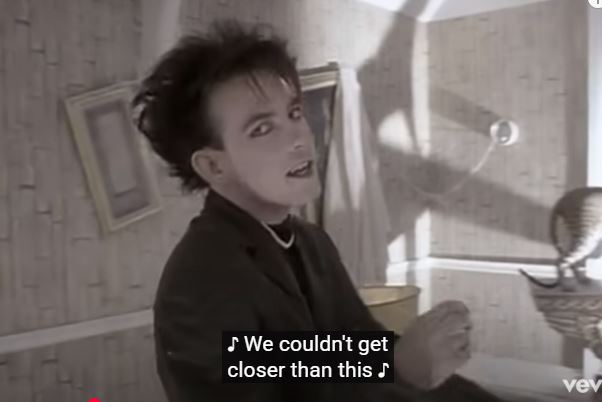The Cure released “The Lovecats” in 1983. It quickly became one of the band’s most famous songs. It became an instant classic because of its catchy beat, strange lyrics, and undeniable charm. The Lovecats is more than just a bouncy song. It also explores the complicated feelings that come with love, desire, and connection, using cat behavior as a playful metaphor. This song is a perfect example of the band’s style in the 1980s because it combines whimsy and longing in a way that works well together.
The Lovecats shows off its unique charm right away, with Robert Smith singing, “We move like cagey tigers / Oh, we couldn’t get closer than this.” These lines set the mood for the song right away, making love seem like a wild and untamed force instead of a calm, peaceful one. The tiger metaphor shows both strength and weakness, showing the animalistic and fierce sides of attraction. The desire for closeness adds a touch of sentimentality.
The Cure’s “The Lovecats”: A Fun but Deep Look at Wanting and Connecting

The chorus of The Lovecats is one of the most memorable in The Cure’s music. The background vocals keep saying, “We missed you,” which gives the song an eerie sense of longing that lasts throughout. This repetition brings out the universal feeling of longing, which is the desire to be close to someone and feel their presence. The words show a love that is full of tension and distance, a love that is always at odds with itself. The phrase “We missed you” is like a mantra, a cry for attention that captures the painful yet beautiful parts of romantic longing.
The Lovecats is different from some of The Cure’s other music because it has a more fun, jazz-influenced sound instead of the darker ones. The song has a lot of energy and a bouncy beat, which is different from the complicated emotions in the lyrics. The song’s unique appeal comes from the mix of lightheartedness and emotional depth. People can’t help but sway to the beat while also feeling the longing and desire that the song brings up. It reminds us that love can be exciting and challenging, happy and sad at the same time.
The Cure: The Band Behind The Lovecats
| Name | The Cure |
|---|---|
| Formation | 1976, Crawley, England |
| Genres | Post-punk, New Wave, Gothic Rock |
| Key Members | Robert Smith (lead vocals, guitar), Simon Gallup (bass), Jason Cooper (drums), and others |
| Notable Albums | Disintegration, Kiss Me, Kiss Me, Kiss Me, The Head on the Door |
| Awards | BRIT Award, MTV Europe Music Awards, Ivor Novello Award |
| Social Media | @thecure on Twitter |
The Lovecats’ Effect on Culture
The Lovecats came out as a single in 1983 and was a big hit. It was also an important song for the post-punk and new-wave scenes. The song added something new to The Cure’s already extensive catalog. It had a more fun and accessible sound that appealed to a broader audience without losing the band’s emotional depth. People who knew how bittersweet love could be—the kind of love that is full of passion and longing but is also hard to understand—made it their anthem.
The song’s video, which showed cats and other silly things, helped it become a pop culture phenomenon in addition to its musical success. The Cure’s skill at combining lighthearted visuals with a deeper emotional story showed how good they were at making music with many layers that appealed to a wide range of people. The video’s strange look also caught the spirit of the 1980s alternative scene, when musicians were using music videos more and more as a way to express themselves and be creative.
The Lovecats had an impact that went far beyond its first release. Many artists have covered the song over the years, and it is still a fan favorite at The Cure’s live shows. The song’s playful energy and deep emotional themes still connect with new generations of listeners, showing how powerful this song is.
The Cat Metaphor: Love in All Its Wildness
The Lovecats uses cats as a metaphor for independence, mystery, and sometimes wild love. Cats are a great way to show how romantic attraction works because they move smoothly, are unpredictable, and have strong but subtle connections. Smith sings, “We bite and scratch and scream all night,” comparing love to how cats act. This shows how intense and passionate desire can be. But there is also tenderness, as shown by the image of curling up “in the fire” and the repeated suggestion to have dinner “with cream.” It’s a love that is both wild and caring, soft and strong.
The feline metaphor also underscores the duality of love—the balance between closeness and independence. Cats can be both loving and distant, and so can romantic relationships. The song shows this contradiction by showing that love can be both a comfort and a source of stress, a place where we want to be close to someone but also need our space.
The Lovecats’ Lasting Appeal
The Lovecats came out almost forty years ago, but people of all ages still love it. The Cure’s song is still popular and easy to listen to because it has a mix of fun energy, emotional depth, and a unique sound. It captures love in all its forms—passionate, unpredictable, and full of longing—and it does so with a sense of fun and lightness that makes it stand out from other songs by The Cure.
The song is still a favorite because of its catchy beat and the depth of its lyrics and pictures. The Lovecats is a song that makes people want to get lost in its beat while also thinking about the more complicated emotions it brings up. The Lovecats is a timeless anthem that continues to captivate audiences with its playful yet profound exploration of love. Whether you dance to its beat or think about its metaphors, it will always be a hit.
